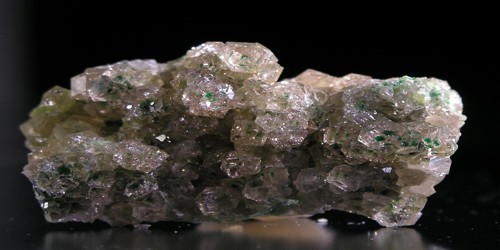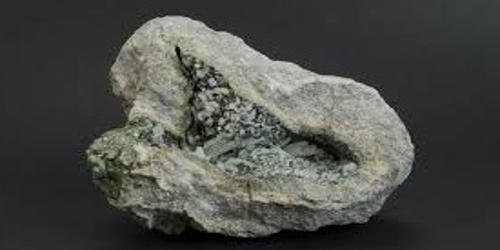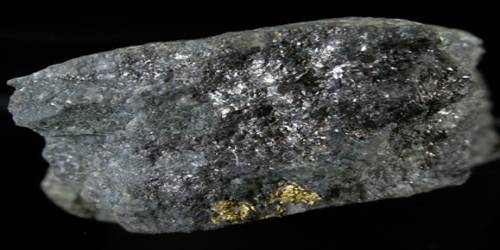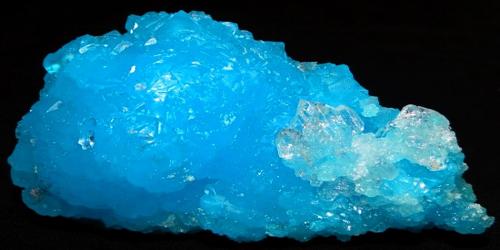Knorringite is a mineral species belonging to the garnet group and forms a series with the species pyrope. It is a green or blue mineral of the garnet group, forming a series with pyrope. Synthetic knorringite has the pure endmember formula Mg3Cr2(SiO4)3.
It was discovered in 1968 in the Kao kimberlite pipe in the Butha-Buthe District of Lesotho and is named after Oleg Von Knorring, a professor of mineralogy at the University of Leeds in England.
General Information
- Category: garnet, nesosilicate
- Formula: Mg3Cr2(SiO4)3
- Crystal system: Cubic
- Crystal class: Hexoctahedral (m3m)

Fig: Knorringite
Properties
As knorringite is a member of the knorringite – pyrope series, natural samples contain variable aluminum in the Chromium site. It is a greenish blue color with a Mohs scale of mineral hardness of six to seven.
- Color: Bluish green
- Crystal habit: Massive and as minute grains
- Cleavage: None
- Mohs scale hardness: 6 – 7
- Luster: Vitreous
- Diaphaneity: Semitransparent
- Specific gravity: 3.756
- Optical properties: Isotropic
Occurrences
It is exceptionally rare and is only known from kimberlite pipes. Kao kimberlite, Lesotho; as an inclusion in a type IIa diamond from a kimberlite in the Mirny area, Yakutia, Russia. It occurs as a rare component within ultramafic nodules in kimberlites in association with olivine, enstatite, chrome diopside, chromian pyrope, chromian spinel, ilmenite, perovskite, zircon, diamond, omphacite, rutile, carbonates, and micas. It has been reported from the Red Ledge mine in Nevada County, California in addition to the type location in Lesotho.
Knorringite is a tracer mineral in the search for diamonds in kimberlite pipes.
Information Source:
















